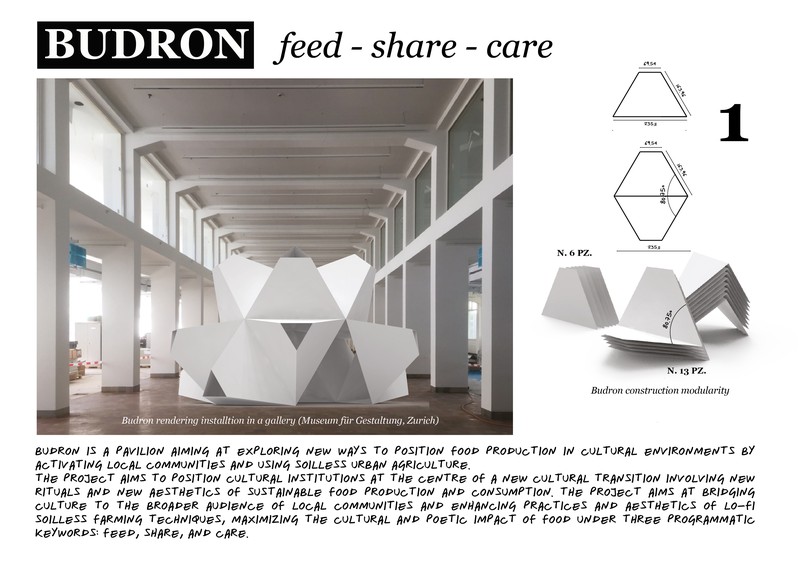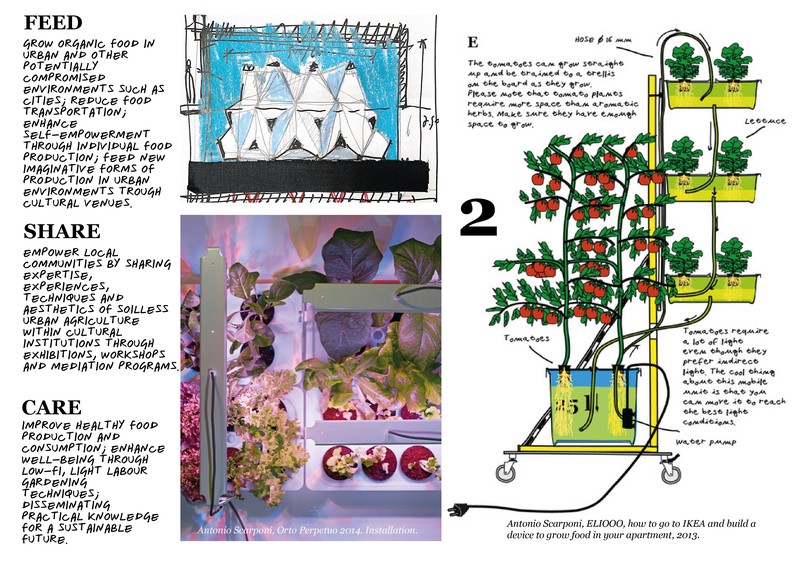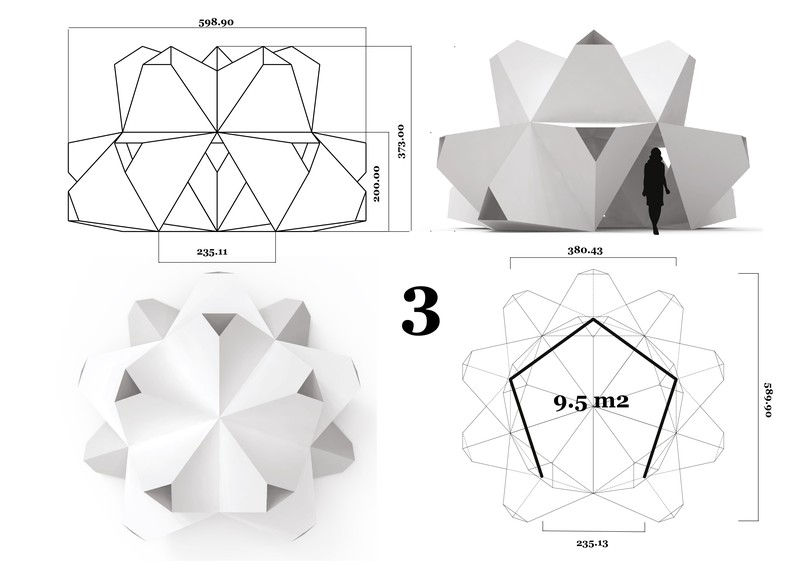
Budron is a pavilion aiming at exploring new ways to position food production in cultural environments, activating local communities using soilless urban agriculture. After its initial installation, it will spread further to reach and connect people in different parts of Switzerland and abroad.
The project aims to position cultural institutions at the centre of a new cultural transition involving new rituals and new aesthetics of sustainable food production and consumption. The project aims at bridging culture to the broader audience of local communities and enhancing practices and aesthetics of lo-fi soilless farming techniques, maximizing the cultural and poetic impact of food under three programmatic keywords: feed, share, and care.
Feed: Grow organic food in urban and other potentially compromised environments such as cities; reduce food transportation; enhance self-empowerment through individual food production; feed new imaginative forms of production in urban environments through cultural venues.
Share: Empower local communities by sharing expertise, experiences, techniques and aesthetics of soilless urban agriculture within cultural institutions through exhibitions, workshops and mediation programs.
Care: Improve healthy food production and consumption; enhance well-being through low-fi, light labour gardening techniques; disseminate practical knowledge for a sustainable future.
Exhibition Device
Large-scale, extensive food production reducing forest areas and its distribution done mainly by road are among the main reasons for CO2 production worldwide.
Budron showcases how using low-cost and sustainable soilless practices to grow food where it is also consumed is the first step closer to a solution for a healthier future, activating cultural spaces and communities in urban environments. Thanks to soilless farming techniques, vegetables grow on water instead of soil, with substantial environmental benefits:
- Up to 90% less water consumption than traditional farming techniques.
- Maximization of harvest production.
- Vertical farming.
- Minimization of exposure to pollution.
- Reduced propagation of plant diseases.
The iconic pavilion containing a low-fi and low-cost hydroponic installation is designed for easy assembling and storage, featuring two distinct modules that constitute the whole structure, with a usable surface of 9.5 sqm dedicated to food production. The pavilion is conceived as a soilless “farming bomb” to spread knowledge by involving and activating the local communities.
Cultural Mediation
Budron is an exhibition device that showcases sustainable practices to share knowledge and train local communities in soilless urban farming, promoting the values of feed, share, and care.
Metaphorically, the knowledge and practices promoted by Budron are intended to be shared and spread like a «seed», training people locally who can continue to pass on their knowledge.
The project is intended to be active in different countries starting from Switzerland, thus creating a network of urban cultural farmers. Its connections to cultural institutions such as design and art museums and galleries highlight the role of culture in the climate care transition, extending its venues to larger communities of interdisciplinary interest.
For the time being, projects are being discussed in the following countries: Switzerland, Italy, Albania, Greece, Brasil, and Spain. Networking and collaboration between the different locations will allow a rich cross-cultural sharing of experiences, increasing the impact of culture in the sustainable food production transition.
Aims: Growing food locally, strengthening resilience, empowering neighbourhood communities, sharing expertise.
Methods: Non-circulating hydroponics, social activities, workshops, participation, exchange with other urban contexts and experiences.
Duration: Initial period for set-up and implementation: 6 weeks to 3 months. Ongoing continuous activities and harvesting are possible after this initial phase.
Production: Leaf and fruit vegetables: lettuce, rockets, tomatoes, herbs, berries, etc.


